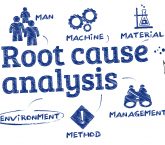Be a Trailblazer with Six Sigma Strategic Objectives
It isn’t just individual projects that can benefit from some Lean thinking. You can make serious traction when defining strategic objectives for your company. In Six Sigma practices, strong leadership and team-based effort are important. But without strategic objectives to give your team and organization direction, the results can often fall short of your intentions. […]






















